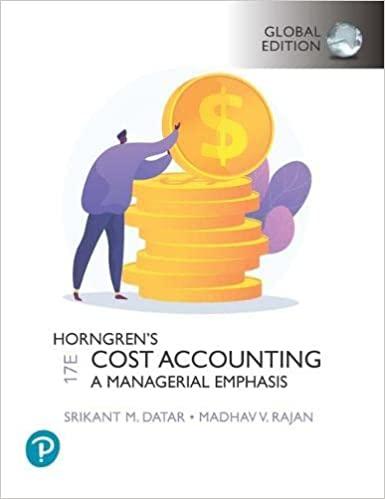Cooperative San Jos of southern Sonora state in Mexico makes a unique syrup using cane sugar and local herbs. The syrup is sold in small bottles and is prized as a flavoring for drinks and for use in desserts. The bottles are sold for $12 each. The first stage in the production process is carried out in the Mixing Department, which removes foreign matter from the raw materials and mixes them in the proper proportions in large vats. The company uses the weighted-average method in its process costing system. A hastily prepared report for the Mixing Department for April appears below: Management would like some additional information about Cooperative San Jose's operations. Total unit: accounted tor 43,000 Management would like some additional information about Cooperative San Jose's operations. Required: 1. What wefa the Mixing Department's equivalent units of production for materials and conversion for April? 2. What were the Mixing Department's cost per equivalent unit for materials and conversion for April? The beginning inventory consisted of the following costs: materials, $27,900; and conversion cost, $11,284. The costs added during the month consisted of: materials, $80,390; and conver5ion cost, $37,080. 3. How many of the units transferred out of the Mixing Department in April were started and completed during that month? 4. The manager of the Mixing Deparment stated, "Materials prices jumped from about $2.05 per unit in March to $2.55 per unit in April, but due to good cost control I was able to hold our materials cost to less than $2.55 per unit for the month" Should this manage be rewarded for good cost control? "Supet," replied Karl, "And I noticed that the $3,225,000 equals what we're paying the agents under the old 15% commission rate." "It's even better than that," explained Batbara. "We can actually save $98,900 a year because that's what we're paying our auditors to check out the agents' reports. So our overall administrative expenses would be less:" "Pull all of these numbers together and well show them to the executive committee tomorrow." said Kart. "With the approval of the committee, we can move on the matter immediately." Required: 1. Compute Pittman Compary's break-even point in dollar sales for next year assuming: a. The agents' commission rate remains unchanged at 15%. b. The agents' commission rate is increased to 20%. c. The company employs its own sales force. 2. Assume that Pitman Company decides to continue selling through agents and pays the 20% commission rate. Determine the dollat sales that would be required to generate the same net income as contained in the budgeted income statement for next year. 3. Determine the dollar sales ot which net income would be equal regardless of whether Pittman Company selis through agents (at a 20% commission rate) or employs its own sales force. 4. Compute the degree of operating leverage that the compary would expect to have at the end of next year assuming: a. The agents' commission rate remains unchanged at 15%. b. The agents' commission rate is increased to 20% c. The company employs its own sales force. Use income before income taxes in your operating leverage computation. Complete this question by entering your answers in the tabs below. Pittman Company is a small but growing manufacturer of telecommunications equipment. The company has no sales force of its own; rather, it relies completely on independent sales agents to market its products. These agents are paid a sales commission of 15% for all items sold. Barbara Cheney, Pittman's controller, has just prepared the company's budgeted income statement for next year as follows: As Barbara handed the statement to Karl Vecci, Pittman's president, she commented, "I went ahead and used the agents' 15% commission rate in completing these statements, but we've just leamed that they refuse to handle our products next year unless we increase the commission rate to 20%." "That's the last straw," Karl replied angrily. "Those agents have been demanding more and more, and this time they've gone too far. How can they possibly defend a 20% commission rate? "They claim that after paying for advertising. travel, and the other costs of promotion, there's nothing left over for profit," replied Barbara. As Barbara handed the statement to Karl Vecci, Pittman's president, she commented, "I went ahead and used the agents' 15% commission rate in completing these statements, but we've just learned that they refuse to handle our products next year unless we increase the commission rate to 20%." "That's the last straw," Karl replied angrily. "Those agents have been demanding more and more, and this time they've gone too far. How can they possibly defend a 20% commission rate? "They claim that after paying for advertising, travel, and the other costs of promotion, there's nothing left over for profit," replied Barbara. "I say it's just plain robbery," retorted Karl. "And I also say it's time we dumped those guys and got our own sales force. Can you get your people to work up some cost figures for us to look at?" "We've already worked them up," said Barbara. "Several companies we know about pay a 7.5% commission to their own salespeople. along with a small salary. Of course, we would have to handle all promotion costs, too. We figure our fixed expenses would increase by $3,225.000 per year, but that would be more than offset by the $4,300,000(20%$21,500,000) that we would avoid on agents' commissions." The breakdown of the $3,225.000 cost follows: "Super," replied Karl. "And I noticed that the $3,225,000 equals what we're payting the agents under the oid 15\% commission rate," "It's even better than that," explained Barbara, "We can actually save $98,900 a year because that's what we're paying our auditors to eheck out the agents' reports. So our overall administrotive expenses would be less." "Pull all of these numbers together and we'll show them to the executive committee tomorrow," said Kat. "With the approval of the











